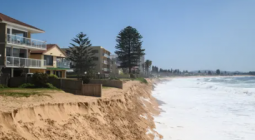What caused the damage to Essex’s lovely Mersea Island

The climate crisis is not the only factor in erosion of the coastline, as a history project has shown.
Mersea Island in Essex, which covers seven square miles, has beautiful scenery and rich history. In summer it is popular for holidays but is threatened by a combination of rising sea level and winter storms, which are changing its coastline.
The climate crisis is not the only factor that has brought about unwanted erosion; human interventions are also adding to the damage. A project by the Coastal and Intertidal Zone Archaeological Network recording 60 years of memories of local people, plus documentary evidence of past industries, shows destruction of natural barriers such as saltmarsh and eelgrass meadows is a significant contributor to erosion.
Increasing use of fertilisers on farmland has polluted the estuary, killing the vegetation. This made the mudbanks unstable, breaking them up and destroying the creeks once used by fishing boats.
The winter of 1962-63, which froze the sea, killed billions of shellfish and the remaining eelgrass left a wet desert. The later use of tributyltin, an anti-fouling paint for boats, made sure there was no chance of plants or shellfish recovering.
We may not be able to stop climate change, but the study shows that by restoring plant and animal life to the mudflats we can slow its worst effects and help save these island gems.
Author: Paul Brown





